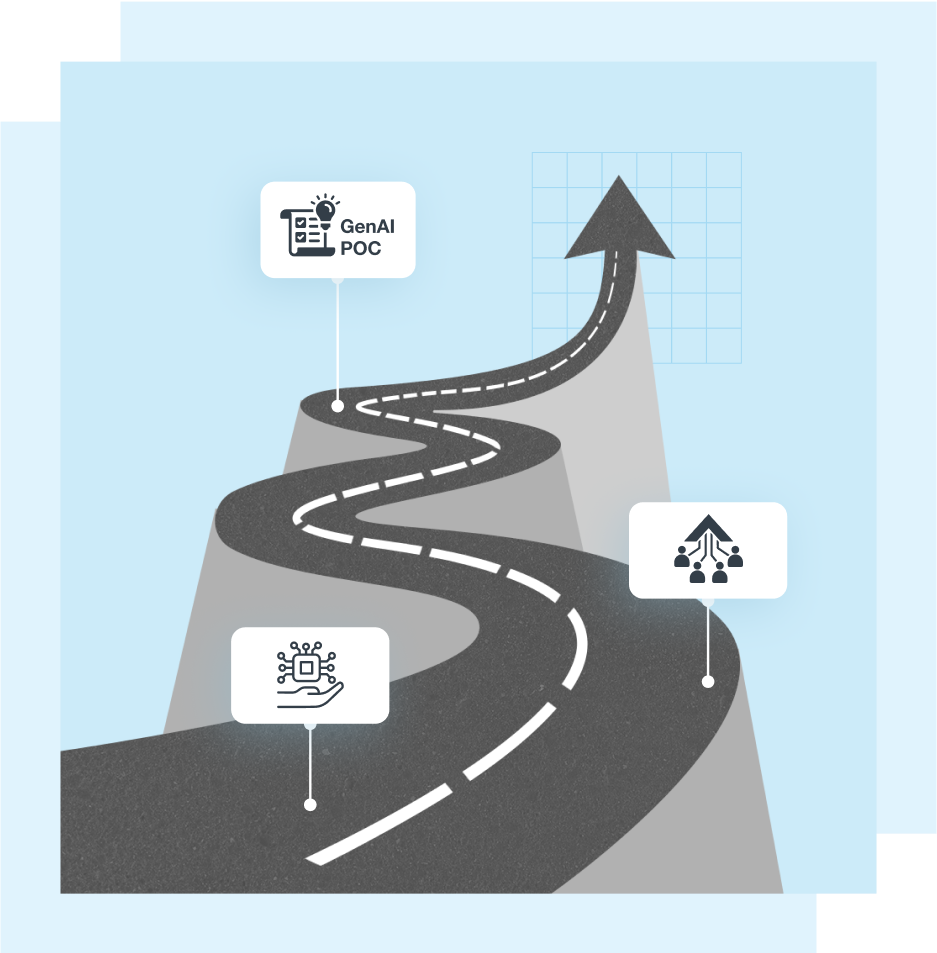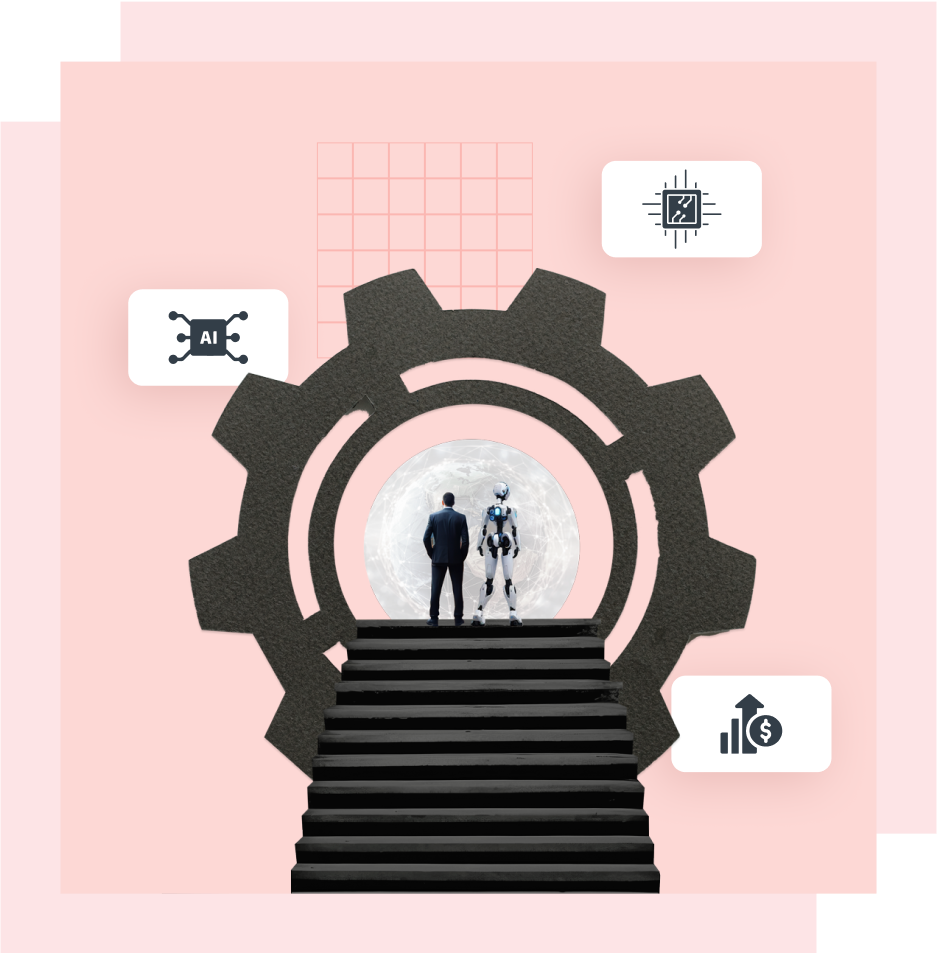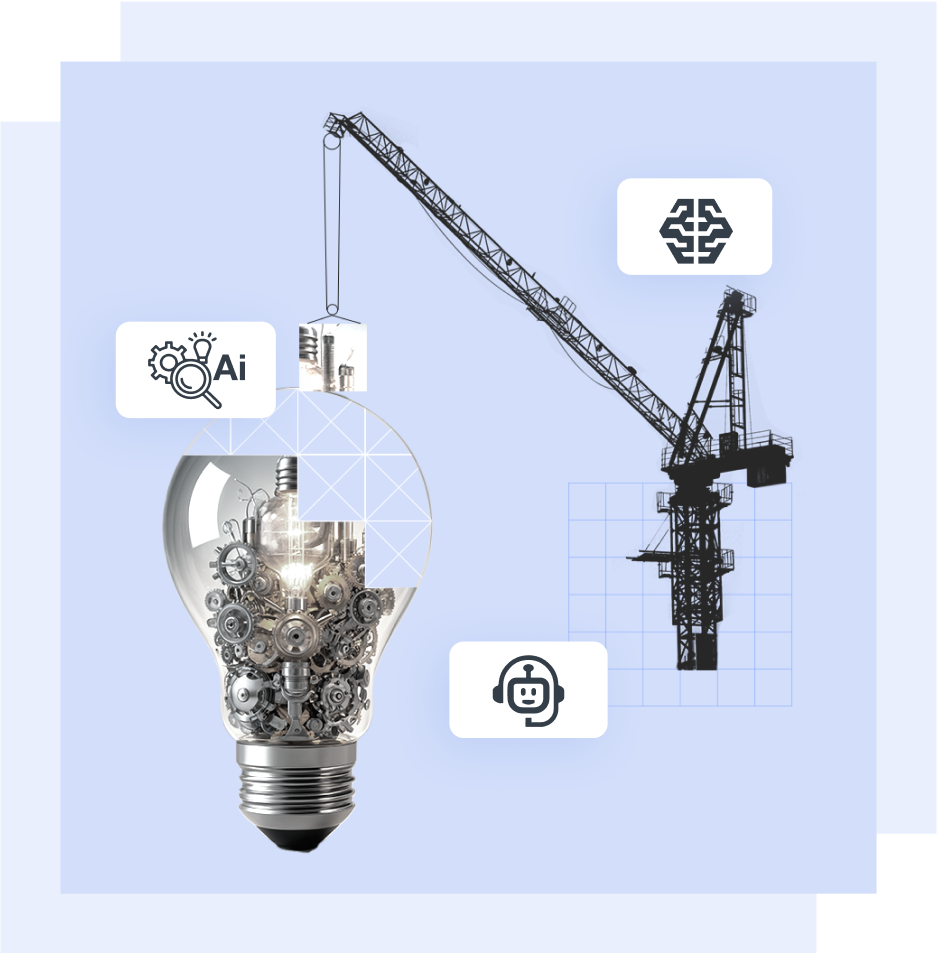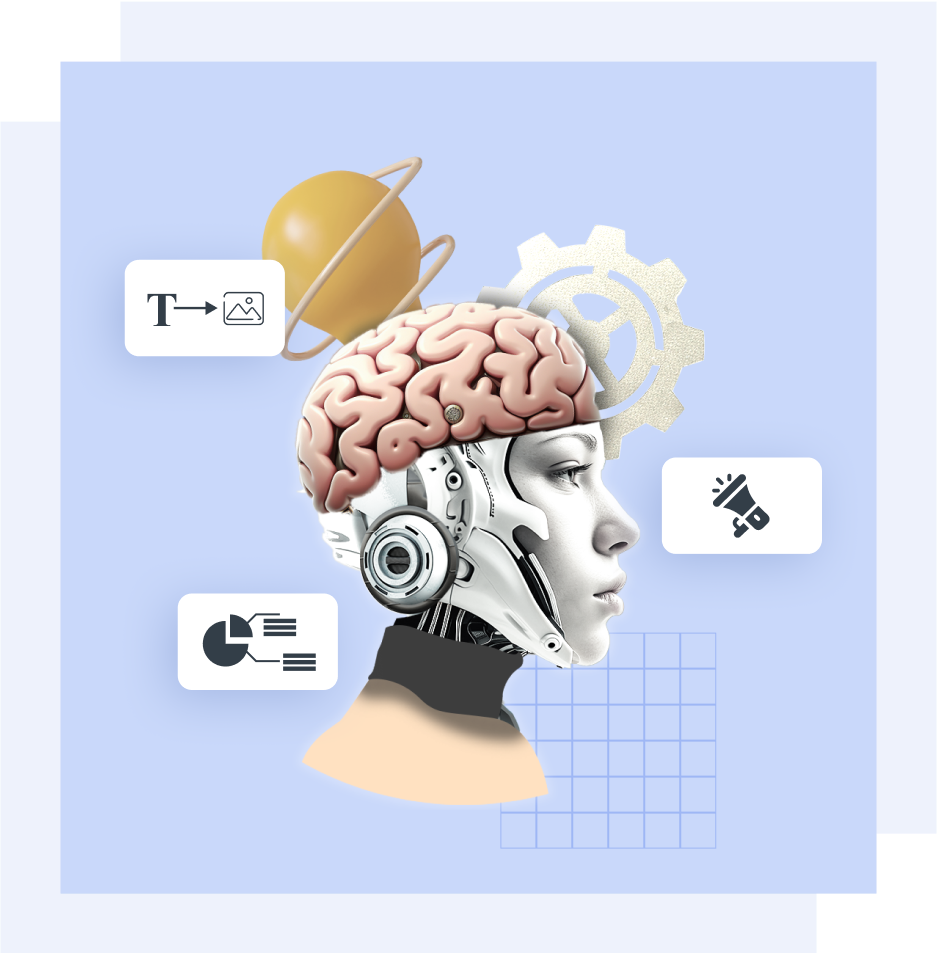Get guidance on the right technologies and skills to invest in
Let us know about your project needs and goals—the more detailed the better. Depending on your goals, we prepare a tech roadmap with a hiring plan and technical consultation.
Extend your tech team with top talent. We oversee the execution and management of your software projects with our proven processes and tech mentorship

Let us know about your project needs and goals—the more detailed the better. Depending on your goals, we prepare a tech roadmap with a hiring plan and technical consultation.
The detailed technical consultation (which itself is worth thousands of dollars in value) includes things like challenges of the project, what tech-stack to use to solve those challenges. A detailed hiring plan is also part of this consultation and includes details on what skill set and experience your team need to have.
Project’s execution roadmap brings all the pieces together to show how your project will come to life. Based on your project goals we help you define processes and delivery roadmap that suits your needs.
Tech architecture solution includes things like how features will be implemented with what technology and framework. It will also include things like algorithms and cloud integrations will be required to build your IP and build the tech engine.
This tech consultation and talent skillset specification are provided for free so even if you don’t work with us you can take it forward and use it in the future.
Simform’s team extension service allows you to hire pre-vetted, world-class developers as part of your team.
We handle all aspects of finding, vetting, and choosing the right candidates that you don’t have the time, focus, desire, or sometimes expertise to do.
Most of our competitors provide TRANSACTIONAL hiring services. You post a gig, they match you up with a developer and you take it from there. We aren’t a transactional service.
Best of all, you don’t need to spend hours sifting through online profiles, sorting candidates by hourly rates, and then picking the person you hope can do the job quickly, reliably, and for the right price.
We aren’t just adding development capacity to your team. Our value is equally distributed across the entire project execution lifecycle. We take ownership and guarantee the delivery and quality of your project.
We use our proven processes, experience, and engagement models to make sure remote engagement delivers successful results.
This way you get the best of both worlds. You get transparency, access, and skill set you get from working with full-time developers. You also get the benefit of an experienced technology firm who is involved in successfully delivering your project.
None! We operate under the policy that it is our responsibility to find you the right person for the job. If you don’t find the right one, you won’t spend a dime.
Whether you want to add a member to your existing tech team or build a standalone project from scratch, we can help you find the best developers for the job and make sure the project is successfully delivered on time.
Finding developers and freelancers is easy — the hard part is knowing if you have found people who will truly deliver. This is specifically difficult if you don’t have years of experience in vetting and choosing the best developers from a range of technologies. We do.
When we have candidates we like we give them a stage to showcase their communication skills and problem-solving ability through a series of video interviews. Here we are looking for people with highly relevant skill sets, well-documented code, and a disciplined approach to testing.
We develop comprehensive small project tests for every role. Each developer candidate’s technical acumen is tested through an automated coding exam. Applicants are tested on language-specific knowledge as well as general programming and algorithm knowledge.
We do full reference checks with their previous clients and employers. We sign NDA and full proof legal contract to make sure your IP is protected. Speed is what Simform takes pride in — it typically takes only 24-72 hours for our clients to receive a short list of top candidates.
Remote teams, whether comprised of developers from 50 miles away from you or 5,000 miles, bring pretty extraordinary advantages.
Knowledge sharing & documentation
The great thing about remote teams is that you are encouraged to keep communications in text format, which also means you will have a written record of all communication. In an office, so much is said casually in passing, and that knowledge is never captured.
You become more disciplined and process driven when working in a remote environment. This is great for any team but sometimes missed in in house teams.
Flexibility
There is no greater sign of trust and respect you can give someone on your team than by offering flexibility with their schedule. They will harness that flexibility to give you incredibly focused hours of work that will be far more productive than office-hours would ever be.
Focus
Offices are great for brainstorming and collaboration, but they cannot give you the focus you need for execution. Working remotely can. Development work requires intense focus and uninterrupted productive time.
Access to great talent around the world
With the world as your hiring pool, you can recruit far more developers and far more talented developers than the leftovers available in your local area. You will also end up with a far more diverse team of people with many different perspectives and approaches to solving challenges.
More opportunity to learn and grow
Without a commute and more time available to them, remote developers are some of the most skilled and up-to-date developers in the world, thanks to the flexibility they have to keep learning and growing.
Timezones can be harnessed for greater productivity
Most people assume that remote development is chaotic because of the differing time zones. This is actually the least of most remote teams’ worries. Time Zones are often utilized wisely so that there is enough overlap for each of the team members to sync up, but also enough difference in time to allow for continuous development to happen as one developer hands off work to another developer.
Most of our developers work remotely and are experienced in working with distributed teams. If an on-site developer is strictly required, we can certainly work with you to make it happen. We can tap into our partner network and a vetted list of developers to help you find a local developer.


We match our development operations to your engineering culture, processes and ways of working. Our developers work within your systems and our tech leads receive their priorities directly from you.
Simform’s tried and tested engagement model of team extension has been refined over the last 10 years. We make sure we are not limited by the distance, time zone differences, and communication fluency that come with remote resources.
Selecting The Success Team
If the client’s team is not used to working with remote talent, it may take some time to work out processes and learn best practices. That’s why we start team integration by assigning a Technical Lead (sometimes local to the client’s location), a project manager, and a customer experience manager.
Tech lead shepherds our development team to execute quality software on time.
A local project manager helps you transition into remote working environment smoothly.
Customer experience managers run a continuous feedback cycle on both ends to look for whatever could go wrong. They keep an eye on 15 project success parameters that we have defined to make sure all things are running smoothly.
Knowledge Transfer and Team Integration
Our team works with you for a minimum of two weeks. Individual new hiree onboarding is replaced with full team onboarding from your side.
Our Tech Lead and PM will work closely with the client for the first few weeks of cooperation to work out an efficient remote working model and help to set up all the agile processes necessary for a geographically distributed team.
Many times our clients already have a tech team and all the processes are well defined. In that case, we do a two-week trial execution so that our team can adopt and work in a way that fits your team’s workflow.
Our team spends the time to understand your processes, who the stakeholders are, who the users are by doing sessions around user stories, code architecture (system or functional level), and most importantly business goals. Technology alignment and collaboration with your developers is critical here.
We try to learn as much as possible in these two weeks. How you like to work, how the code should be structured, how tasks should be assigned, how questions should be asked, how suggestions should be given, how to do standups etc.
We make remote work
We hear frequently from prospective clients that it takes forever to release new features, that users aren’t adopting products, and that finished work hasn’t met their expectations.
The solution: Communication, lots of it. We build teams with a focus on collaboration, consistent communication, and transparency in working toward a shared goal: a great product.
Constant communication ensures there are absolutely no surprise breaks in execution. We use video calls, daily stand-ups, one-on-one check-ins and (if possible) a once a year “retreat” where everyone can get some face time.
Our fully integrated team is self-managed and operates autonomously
Simform team integrates into your team, participating in standup and scrum meetings, weekly demos, weekly retrospectives.
Daily stand-ups
We do daily stand-ups where everyone gets on a video chat and tells you what they are working on that day and the previous day. When you’ve got people working for you in multiple time zones, this can be challenging. But it is crucial to the success of your team.
The Agile methodology calls for each contributor to go around, talk about what they’ve been working on, what they will be working on, estimate how long it’s going to take them, whether there are any critical blockers that could cause delay, and what their bandwidth looks like. These stand-ups are rigorously tracked by the Tech Lead.
But we do not just rely on unstructured communication. Everyone at Simform uses PPP (progress, plans, problems) methodology which is used at companies like Facebook, Google, eBay, Skype etc. PPP is used to detail progress, issues, thoughts and anything else pertaining to their tasks.
Weekly demonstrations
This one is simple: get everybody on a video chat, share screens, have people show their work, and then talk about it.
If something is exceptional, call it out and appreciate the work. So the team stays motivated.
If something is buggy or substandard, ask why and figure out the solution. This meeting is usually way longer than a stand-up as it is designed to literally “demo” the work that has been promised during stand-ups.
Keep in mind that if there are any “semi-off-topic” follow-up questions then they should be saved for the later Retrospective meeting.
Weekly Retrospectives
A weekly retrospective is where you all collectively review what went well and what could have been improved based on the demo.
We use the lean method of holding a meeting. It is great because it gives everyone a voice—there’s an element of democracy in the development process now. You’re still “the boss” but everybody now has some skin in the game. This will also help to organically create a culture within your remote team—something we will cover at length in a future post.
There’s really no “one-way” to optimize and manage a remote team. Everybody has got their own style and strengths. And your team and processes will evolve as they need to in order to meet the needs of your product and to optimize the time and output of your team.
As a client, you will own all the intellectual property of all paid-for work. We provide an NDA to protect confidentiality. All our team members sign a strict contract to protect your IP.
With our fully-managed software development service, you get proven processes and expertise that ensures remote engagement delivers successful results. We take ownership and guarantee the delivery and quality of your project.
1) Test Cases Driven User Stories for Clear Requirements –
When our engagement with the client starts we help them create detailed user stories and scope out the next few sprints.
2) Intense Sprint Planning
In order to execute projects on time, you need to plan sprints as much as possible.
3) Iterative Delivery
Typically, in an agile development process, we will divide the implementation process into several checkpoints rather than a single deadline. They are called iterations and are part of each sprint.
4) Documentation
We document everything from application and code level architecture decisions, to live user stories document, to design focused UX/UI/Design System documents.
5) Constant Communication and Retrospective
Stand-Up Each workday begins with a brief team stand-up meeting to discuss what we did yesterday, and what we plan to do today.
6) Code review
A successful peer review strategy for code review requires a balance between strictly documented processes and a non-threatening, collaborative environment.
7) Integrating QA in the development process
We have gotten much better about integrating QA in our development process. We used to loop QA in after our code was pushed to the master branch, which was clunky.
Now our QA engineers will identify and create a test plan as soon as we begin working on the next sprint. As initial development nears completion, an engineer and a QA engineer will run through test scenarios together.
8) Post-release
It’s important to circle back and review how the process went once you’re done, be it a success or failure.
Did the testing rightly model the production scenario?
Did your team correctly estimate the effort required to release a product?
How is the product running in production?
Review how well the team performed by revisiting the implementation and testing checkpoints. Your team will adjust their performance accordingly as they grow used to being held accountable for every step in this process.
After all, we are a software company and we use technology to make collaboration work. The whole company is run through several tools, many of them proprietary, to help make fully integrated and self-managed teams operate autonomously.
All top athletes have great coaches and use comprehensive data and analytics to help tune their performance. We believe all top performers can use the same data and analytics to help them get even better.
As a result, we’ve developed a data-driven productivity app—for how our team works. It effortlessly collects more than 20 data points and provides analytics that enables individuals and teams to use real data on how they work to bring their performance to another level.
In alternative weekly retrospectives meetings, we discuss the developer performance dashboard. This has all the information about the overall status of your project, key milestone dates, sprint plans, productivity of developers, velocity of developers, story points worked on developers, complex tasks worked by developers etc.
We know that if client’s project launches smoothly, they’ll come back for more. We’re willing to over-invest in guaranteeing results, rather than under-invest to make our financial reports look pretty in the short-run.
We offer a risk-free trial period of up to two weeks. You will only have to pay if you are happy with the development team and wish to continue.
This is a good way to ensure that the freelance developer is a good fit. If you don’t find them to be extraordinary, you will not be charged and to make sure your time isn’t wasted we will assign someone to guarantee the work is done for free.
Simform maintains a variety of insurance to protect and satisfy company-level obligations for our enterprise partners.
With other platforms client’s IP and their security isn’t as safe. And reliability, responsibility, and long term commitment of freelancers are questionable.

Thoroughly vetted team of talent that is incentivized to deliver.
Kick off new projects fast. We do all the work of assembling the right experts to scope and start new initiatives.
Your dedicated Tech Lead does all the heavy-lifting of managing the project team so you can focus on what’s important.
Monitor the progress and health of your project based on key attributes like milestone tasks, bugs, blockers, and team happiness.
Get expert advice right when you need it from any agency in our network, whether it’s a data scientist, architect, UX designer, or niche technology expert.
Our business analysis team will do all the work of gathering crucial project information from key stakeholders to deliver technical requirements that developers understand.
You get complete ownership and licensing for the software built by Simform, so you’re free to use and commercialize it.
We’ll provide everything you need to seamlessly hand off new software and train your internal teams.
End-to-end testing, round-the-clock support for bugs, and on-demand maintenance.
Simform maintains a variety of insurance to protect and satisfy company-level obligations for our enterprise partners.
We cover all contract work, payroll operations, team setup, employees’ retention, travel management, and logistics.
We provide modern office buildings with the creative and inspiring working environment, equipped conference rooms, established IT and facility management.
We help you transfer product knowledge to align remote software developers with your in-house team, keep people motivated and loyal, ensure personal development and growth.
We measure dedicated team productivity metrics and KPIs, monitor the quality of software, manage deliverables, and support startups with an individual program.
We advise on aspects you need to strengthen, apply agile transformation practices, provide business analysis services, assist with software architecture, and help manage your software lifecycle
 Hiren Dhaduk
Hiren Dhaduk
Creating a tech product roadmap and building scalable apps for your organization.